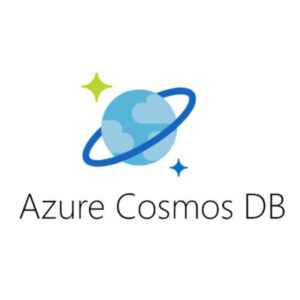Last week, Microsoft introduced its new Dataflex technology for data services inside of Microsoft Teams, in addition to the rebranding of its former Common Data Service (CDS) to be called Dataflex Pro.
Below I have outlined five real-world scenarios where Microsoft Dataflex is a game-changer, particularly in larger enterprise organizations. These 5 scenarios are a reflection on actual situations I see playing out with AIS clients today.
Requirement-driven Application Development
These are common scenarios when the organization has a specific set of requirements or use cases for which you are seeking to build a new, modern application. For some time now we’ve lacked a true data service to build solutions of moderate data complexity but that don’t require the premium Power Platform licensing. Power Apps built on top of Dataflex now fit nicely between SharePoint (lower complexity) and Power Platform or custom-Azure solutions (higher complexity). Use Dataflex when you need a relational data source that isn’t complex enough to require Dataflex Pro or SQL, and use Teams and your existing M365 licensing instead. Now we’ve got a great new arrow in our app development quiver.
Application Modernization
Here we’re talking about cases when you have a legacy application (or portfolio of applications) that you’re looking to modernize through a Rebuild approach (reference Gartner’s 5R Model). Many legacy applications are built in very complex ways, creating immense technical debt. In past times, we’ve lacked the tools to build solutions more simply and rapidly using low-code tools. For rebuilds that don’t require the complexity of Dataflex Pro or Azure data services, Dataflex inside of Teams introduces an extraordinary new path to rapid rebuild (maybe time for Gartner to add a sixth “R”).
Business group-based app development
We often encounter workloads that are specific to individual business groups, and thus not deployed enterprise-wide. Many business groups—be they functional, geographic, product-aligned, or event smaller teams or departments—already use a corresponding Microsoft Teams team. Dataflex’s 1:1 relationship with each team provides an excellent place to digitize business processes localized to individual business groups. For example, a training team that needs to manage their upcoming events and student attendees, or a department head who needs to take stock of employees’ outside skills as she re-jiggers post-pandemic “return to work” assignments.
InfoPath Migration
As Microsoft InfoPath faces end-of-life, we’re seeing more and more organizations needing to migrate thousands (or more) forms to some combination of new technologies (usually Power Platform). Like the previous example, though, many of these InfoPath forms are localized to activities inside specific business groups. Dataflex inside of Teams provides a pathway for rapid modernization of these forms, allowing more significant efforts to be directed to the enterprise-wide InfoPath “workloads” whose impact, complexity, and scope will necessarily make them heavier lifts.
Enterprise-wide Power Platform adoption (low-code cloud transformation)
Gartner predicts that 65% of all app development will take place atop low-code platforms such as Power Platform by 2024 – what I often refer to as “low-code cloud transformation”. The idea is that there is tremendous opportunity to modernize in the cloud when we’ve got both citizen and full-time developers working together to build solutions along a very wide complexity spectrum. Dataflex is a game-changer here because it allows productivity to important grade workloads (check out the model for this) to be built and delivered inside of Teams (where many users already are) using a truly relational data source. It also allows apps built in one part of the organization to be push-button installed to Teams serving a different part of the organization via an app store like service. That’s going to be powerful for propagating innovation across large organizations.
We will see tremendous innovation around Dataflex and Dataflex Pro in the months ahead. Organizations’ potential here will be enabled by their ability to effectively manage and govern the technology in the hands of users. Another topic for another day, but I would be remiss not to say so. For this, I recommend starting with the Power Platform Adoption Framework, and our recent video outlining the Center of Excellence (CoE) as a Service concept.
AIS is the 2020 Microsoft worldwide Partner of the Year for Power Apps and Power Automate.






